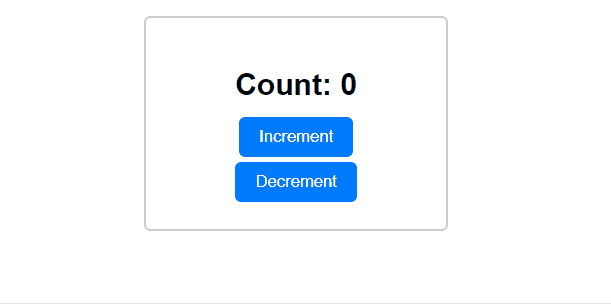How does useReducer help manage complex state in React components?
Last Updated :
22 Feb, 2024
useReducer is a React hook that provides an alternative approach to managing state in components compared to useState. While useState is easy and suitable for managing simple state updates, useReducer and is particularly helpful for managing more complex state logic.
Managing Complex State in React with useReducer:
- Centralized State Logic: With useReducer, complex state logic is consolidated into a single reducer function, enhancing code organization.
- Predictable State Updates: Actions dispatched to the reducer provide a clear and predictable way to modify the state, aligning with Redux principles for debuggable code.
- Complex State Structures: useReducer is well-suited for managing intricate state structures, offering flexibility in handling nested updates.
- Easier Testing: Encapsulating state logic within the reducer simplifies testing, enabling isolated testing of state modifications.
- Performance Optimization: useReducer may optimize performance, particularly with deep state nesting or frequent updates, by efficiently propagating state changes.
Example: Below is an example of managing complex states in React with useReducer.
Javascript
import React, {
useReducer
} from 'react';
import './App.css';
const reducer = (state, action) => {
switch (action.type) {
case 'INCREMENT':
return {
...state,
count: state.count + 1
};
case 'DECREMENT':
return {
...state,
count: state.count - 1
};
default:
return state;
}
};
const App = () => {
const initialState = { count: 0 };
const [state, dispatch] =
useReducer(reducer, initialState);
return (
<div className="counter">
<h2>Count: {state.count}</h2>
<button
onClick={() => dispatch({
type: 'INCREMENT'
})}>
Increment
</button>
<button
onClick={() => dispatch({
type: 'DECREMENT'
})}>
Decrement
</button>
</div>
);
}
export default App;
|
CSS
.counter {
font-family: Arial, sans-serif;
text-align: center;
margin: 20px auto;
padding: 20px;
border: 2px solid #ccc;
border-radius: 5px;
width: 200px;
}
.counter h2 {
font-size: 24px;
margin-bottom: 10px;
}
.counter button {
background-color: #007bff;
color: #fff;
border: none;
padding: 8px 16px;
margin: 2px 5px;
cursor: pointer;
border-radius: 5px;
transition: background-color 0.3s;
}
.counter button:hover {
background-color: #0056b3;
}
.counter button:active {
transform: translateY(1px);
}
|
Output:

Output
Share your thoughts in the comments
Please Login to comment...